- Home
- Christopher Shields
The Steward Page 3
The Steward Read online
Page 3
Concentrating on the Blue Jay and its constant song seemed to strengthen my resolve. Silly, I know—it’s not like a bird could really protect me from anything. But I decided it was a good sign, nonetheless.
My mind wandered back to my newest friends, and I kind of wished they could have come with me to the cave … for moral support. A few days after my promise to Aunt May, I met three girls in Eureka Springs—Rhonda, Candace, and Rachel.
Mom had found a local art gallery to sell her work, and the manager’s daughter, Rhonda Adair, happened to be working in the shop that day. Rhonda and I left our mothers so they could work out the details of their new arrangement, and walked down the steep street, out of parental earshot, to chat. Eureka, as everyone called it, was a well-preserved nineteenth century Victorian hamlet that reminded me of the ceramic Christmas village Mom always displayed over the holidays. Brick and stone buildings in the historic center of town lined the narrow valley and steep wooded hillsides—all of it surrounded by Victorian mansions and gingerbread bungalows. Eureka was charming, and unlike any place I had ever seen.
The crack of a branch yanked my mind back to the trail in the woods. I realized quickly that it was Justice having some fun by leaping back and forth across the narrow trail ahead. He barked back at me a couple of times, as if to say, “Come on slowpoke, do it like this.” I felt a bit more confident hearing his big, deep bark. Whoever’s out there, I don’t think you wanna mess with Justice! A little smirk pulled the corner of my mouth as I trudged ahead. A hundred yards past the fork in the trail, my body relaxed more with each step Justice and I put between us and Chalen. See, this isn’t so bad. “Oh, shut up,” I told myself. Justice stared at me. “Not you, boy.” He nuzzled my hand. Nervously, I chuckled at my internal dialog, and thought again about Candace and Rachel.
They were Rhonda’s best friends. I’d met them both at the coffee shop Rhonda took me to—a quaint café across the street from an enormous stone hotel that seemed to grow out of the side of the mountain. The three of us chatted up a storm while Rhonda mostly ignored the conversation. In the end, I seemed to know we’d all be friends—well, Candace, Rachel and I at least. Over a Diet Coke, I had begun my new life as a teen in Arkansas.
Rhonda was athletic looking, if not a little thin. Blonde, perky, and graced with a perfect jawline, she was very pretty and she knew it. It was clear to me—immediately—that she preferred to be the center of attention, directing each conversation to a story about herself, and growing sullen and quiet each time the conversation wandered elsewhere. After telling me everything her dad owned in town, she showed me a picture of a very good-looking guy with blond hair, big white teeth, bright blue-gray eyes and a deep tan. “This is Doug Monroe. He and I have been together for a year,” she said with a big smile. “He plays football, basketball, golf … well, anything involving a ball, actually.”
She went on to explain that Doug’s family lived on the lake, and even though he had gone to junior high in Eureka, he wanted to be a quarterback. His dad, a professor at the University of Arkansas, transferred him to Fayetteville High School because Eureka Springs High didn’t have a football team. The girls joked that there was no place flat enough in town for a playing field. It seemed likely—after touring the city in Aunt May’s massive red Lincoln convertible, I was convinced the highway department had taken the path of least resistance. If there was a section of flat land bigger than a tablecloth in the entire area, I must’ve missed it.
Candace was a tall, slender, beautiful girl with long, dark auburn hair to her shoulder blades. More reserved than either Rhonda or Rachel, Candace had an air of confidence about her. A little on the pale side, she had high cheekbones and full lips set above an angular jaw. Perfect eyebrows and long eyelashes framed her piercing hazel eyes. In the coffee shop, she was completely aware that two guys at the counter were staring at the four of us, but she remained cool and aloof. She reminded me of me.
Rachel was a shorter, slightly thicker girl with brown hair and blue-green eyes. She had a bubbly personality and a contagious smile, but lacked Candace’s confidence—well, any confidence. She complained when Candace ate a pastry in front of her, launching into a brief but funny tirade about how skinny girls eating pastries really pissed her off. Rachel was pretty but apparently she didn’t see it. In the first few minutes I knew her, she complained at length about battling her weight. She’d noticed the guys at the bar too, but she squirmed in her chair and went off on another tirade about guys who stare.
During the twenty minutes that followed, I answered at least a hundred questions about Boca Raton, Miami, beaches, shopping, and boys. They told me about the cute guys at Eureka Springs High, and to hear them tell it there were quite a few. They all agreed that one guy in particular, Gavin Byrne, was the hottest guy in school—according to them he was the most beautiful guy ever. A sophomore, they described him as sixteen going on twenty-five. He had moved to Eureka from somewhere in France last semester, and his house was close to Aunt May’s. Noted!
They had been right, as I found out later—Gavin was my closest neighbor. They had been right about everything. As my thoughts migrated to him—his face, his smile, his muscular body—my chest swelled, and warmth spread over my cheeks. The woods seemed less bleak as I remembered his golden-brown eyes.
Justice froze on the path and stared into the trees above us. Gavin’s memory faded as I jerked my head around, gasping, trying to find … whatever it was. “Oh my god,” I blurted out when a squirrel scampered up a tree while spouting an angry barrage of rodent chatter. Doubled over, my hands on my shaking knees, I sucked air into my lungs and closed my eyes. “Dammit, Justice!” Don’t you think I’m scared enough by the real creatures that are probably stalking us right now?
The sensation of a cold nose in my ear, followed quickly by a warm, wet tongue across my face, made me reel. “Okay, okay, I forgive you. Stop licking!” As if he were laughing at me, a series of snorting growls rumbled out of his chest as he nuzzled my hand. “Shall we?” I asked him, pointing up the trail. On cue, he turned and trotted in front of me.
Three hundred yards ahead, a wide clearing appeared in the dense tangle of barren trees. The bluffs … the caves … ugh, my promise, all lie in wait within that treeless void. In a tree limb nearby, I noticed it again—the Blue Jay. That’s so odd. Why is that bird still here? Keeping about the same distance it had for the last quarter of a mile, the Blue Jay sang again, you-can-d’it, you-can-d’it.
This place is so bizarre. As the thought wandered through my mind, I almost forgot that I was supposed to be angry. Could any of this be true? As I stared at the bird, the surreal nature of the unusual things I’d seen at the Weald roamed around in my thoughts. I’d already considered the possibility that Aunt May wasn’t completely nuts on a few occasions—this was another. My companion bird, the woman’s voice, the disappearing wolf… Could the Fae be real?
The night she had told me about them, I spent several hours on my Mac. I found that a lot of people believed in the Fae, but none of them agreed with each other. The stories were so varied, so unlike anything Aunt May had described, that the skeptic in me wrote it all off. But my resolve, never completely resolute, had wavered when Candace, Rachel and Rhonda came to the cottage for dinner last week.
Mom, dead set on making my transition a little easier, had plotted with Mary Adair, Rhonda’s mom, to have me spend a little more time with my future classmates. Honestly, it helped. I would start school in two days, but I wouldn’t be going in without friends. At dinner, I learned that all three of them were familiar with the legends about the Weald. They discussed accidents, deaths, and strange sightings like they were as normal as the weather. Candace peppered Aunt May with questions about the cottage and the property, but Aunt May didn’t deflect like I expected. She went into storytelling mode, ducking and dodging the truth—as she saw it—with anecdotes and parables.
In a pleasant surprise, Candace turned out to be more laid back than sh
e’d appeared at the coffee shop. Quick witted and very expressive, I learned she had a fondness for astrology and had read extensively about the Celts. She loosened up even more after dinner, laughing freely when she wasn’t pursing her lips and arching her eyebrows at something Rachel or Rhonda said. I really liked her.
Both of her parents were attorneys, though her dad was the only one still practicing law. Her mom, Chloe Fontaine, had grown disillusioned with the profession. She was especially disheartened with personal injury law, so one day, a few years ago, she announced that she was opening a shop in Eureka to help people “mend their spirits.” She burned her suits, sold her law books, sub-let her office space in Benton County, and opened Fontaine’s in downtown Eureka. Chloe sold crystals, essential oils, and books on spirituality, homeopathic healing, organic gardening and, from what I gathered, many other things that had exactly nothing to do with practicing law. At that moment I knew that I had to visit her store to do some research.
At some point in the conversation, Aunt May stopped talking and turned her full attention to Candace, who told us that her mom had researched the Weald for years. Chloe was convinced that while boating she had once caught a glimpse of a creature on one of the islands just beyond the peninsula. She described it as otherworldly. Like disappearing wolves, vanishing caretaker gnomes, and oddball Blue Jays?
“There’re a lot-a weird things up here, but I’m ‘fraid the otherworldly creature yer momma spotted on the island was prob’ly ol’ Chalen, the caretaker,” Aunt May said, chuckling. “His ol’ pockmarked hide’s so white it’s damn near translucent. Hell, half the time I see ‘im, I have ta give ‘im a double take—mistook ‘im for a tragic garden gnome more’n once.”
Deftly, Aunt May slipped into folklore-mode and explained that the property had long been called the Weald Fae. “Our Irish ancestors, who settled this area, gave it the name’n part due ta Osage legends ‘bout the original residents o’ the mountain. While the Osage used different names for ‘em, our ancestors understood immediately that the native people were referrin’ ta Sidhe, or fairies, the fair folk—but more accurately, the Fae.” She told the story as if it were just another Ozark legend. I got the feeling, however, that she believed them to be true, but knew that most people listening would take them as fables. She seemed comfortable that the truth of her stories lay hidden in plain sight, wrapped in unbelievable packaging. The truth. I wondered about that as I watched the strange Blue Jay a little longer. We’ll see soon.
Stepping into the clearing above the bluffs, I took a deep breath, dropping my backpack beside me. The curious Blue Jay settled onto the low bough of a large pine tree near the bluff, and hopped back and forth in the thick, green needles. At least something is green in this hellish place. I wasn’t quite ready to look over the edge—I’m not afraid of heights, at least, but looking over might confirm that the cave awaited me below. I unzipped my coat and tried to settle my nerves. Being out of the woods helped, but it didn’t do much for my fear of caves. That was next.
It felt silly to wonder why I planned to do it—to shimmy down a rope ladder and look for an old Celtic symbol for Earth in a frickin’ cave. I knew why—that promise that seemed to grow older by the moment. And curiosity got the best of me. Maybe there was a measure of pig-headedness, too. Dad was right, of course. I couldn’t stand to let fear keep me from doing anything. I never have. But the driving force behind this … quest, this part of it, had turned mostly to my curiosity. Candace had seemed so convinced that there was more to the Fae than a bunch of legends and tales.
Two days after I met Candace, I went to her house with a plan. The Fontaines lived in a beautiful three-story Victorian manor set on a shady lot in the heart of Eureka. With elegant turrets, stained-glass windows, and a red-shingle roof, it was a Victorian masterpiece. The street they lived on, Spring Street, wrapped around a hillside like all the other streets in town. The streets didn’t cut through the hills like in bigger, modern cities but instead were built up, down, and around them—it seemed the highway department built streets anywhere it could get asphalt to stick and not slide down the hill.
Candace’s street was lined with ancient trees, and laced with iron or wood picket fences surrounding one gingerbread house after another. After a brief tour of her home, we walked to her mom’s store—the real destination for my plan. Based on what Candace said, and on how terrible the internet information had been, I thought I’d have more luck with Chloe, Candace’s lawyer mom turned Shaman shopkeeper.
Fontaine’s was just off Spring Street and halfway down a set of stairs between two nineteenth century buildings. I’d caught the spicy fragrance of incense as soon as the door opened. The welcoming wave of warm air that caressed me inside was like walking into the middle of a freshly baked cinnamon roll.
Chloe was very interesting, and not at all what I had expected. Her warm and engaging personality put me at ease the instant I met her. She didn’t wear a crazy hemp moo-moo either—apparently she didn’t shop at the gypsy outlet mall where Aunt May bought her clothes. She wore teal silk. In an instant I knew where Candace got her thin build and auburn hair.
Chatting with Chloe was easy, and she was delighted when I asked if she had any books on the Fae.
“Yes, several,” she said.
Awesome, finally some answers. In the back of the store, she showed me books on everything from Astrology to Zoroastrianism. She pointed out a section of books she thought might help, and left me to browse.
The first book said that anyone could learn to communicate with nature spirits and elementals. The author claimed that there were seven planes of existence, and that “subtle beings” inhabited each one. He maintained that fairies and elves were the children of Mother Nature, and they like working with people. That sounded nothing like Aunt May’s description.
I flipped open another and read about places to avoid, such as fairy circles—round patterns of toad stools or mushrooms found growing in the woods—and circular rock formations called raths. The author suggested that a fairy circle was a doorway to another realm, and that humans could accidentally “slip through.” Duly noted—I don’t want to be doing that.
By the time I got to the third book, Candace came over and told me what some of the other books said. She had read them all. She picked up one and said it discussed how to attract fairies to your garden by leaving sugar in a bowl, and it claimed that fairies were allergic to metal. In another book, she said, the author claimed that every living creature on the planet has its own fairy attached to it. I laughed when she shrugged her shoulders and tossed the book down.
“Nope, not exactly what I’m looking for. So, how much of this stuff do you believe?” I asked.
She grinned at me. “I’m not saying that I believe, exactly, but I am interested in finding out. Too many people, from too many cultures, believe in them. If people have seen something, I’d like to know what it is.”
I was more frustrated than ever. Much like my internet research uncovered, each book explained completely different ideas about fairies despite the fact that each author claimed to communicate with them on a regular basis. I’d have given up, except that I still could not explain the Blue Jay, or the disappearing wolf—and some books did claim that Fae could change forms … and disappear.
Looking from the top of the bluff, the lake wound through the valleys as far as I could see. I knew the cave was below me in the wall of the bluff, waiting for me to … climb down to it. I had to put it out of my mind—think about something else—to calm down. When I opened my eyes, I saw the little bird watching me through the pine needles. So I stared at it for a moment. Are you Fae?
You-can-d’it, You-can-d’it, the bird responded. Justice let out a yawning growl and snorted in agreement. Too bad I don’t speak Blue Jay or Poodle. It was too bad. If they could answer me, tell me definitively, I wouldn’t have to go into the cave.
I wasn’t really thirsty, but I took a long sip of cold water anyway, letting it w
ash over my tongue and slide down my throat. I had to focus. Breathing did that for me, like the steady rhythm I slid into while swimming. After I screwed the cap back on the bottle, I reached under my coat and pulled out the thin gold chain that hung around my neck. On it, a blue and white stone dangled in the morning light. Peace of mind, calmness, deep breaths.
As I studied the stone, it reminded me of Chloe’s store. “Maggie, have you found what you’re looking for?” Chloe had asked.
“I don’t really know what I’m looking for, Mrs. Fontaine. I just thought it would be interesting to learn more about Fae mythology and the cardinal elements.”
“It’s Chloe, please. Those are interesting subjects.”
“Do you believe?” I asked, carefully studying her face.
“In the Fae? Well, yes, I suppose so … at least I’m open to the possibility.”
“I don’t know, there are so many stories and no two are alike. If I did believe, I wouldn’t know exactly what to believe, and that’s just about the Fae. I’ve seen several different versions describing the elements, too. The experts can’t even agree on how the elements are arranged or how many of them there are.”
She smiled at me and nodded. “I know. I’ve run across several versions of the cardinal elements, and I’ve read dozens of different stories about the Fae. There are Native American legends about similar beings, but most don’t involve humanoids. Those stories tend to anthropomorphize animals. Most of the folklore on European fairies, which is the basis for the majority of most contemporary literature, was originally passed from one generation to the next in oral histories. Because of time, and narrow-minded people, many of the stories have been lost. The few early texts that did exist were systematically destroyed by religious zealots.

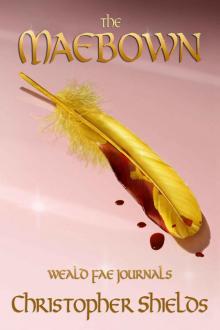 The Maebown
The Maebown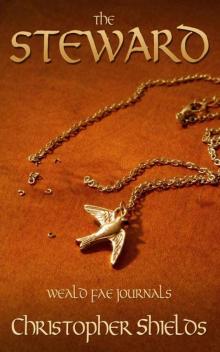 The Steward
The Steward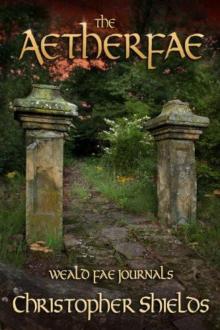 Weald Fae 03 - The Aetherfae
Weald Fae 03 - The Aetherfae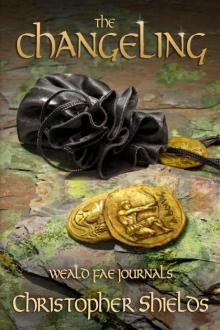 Weald Fae 02 - The Changeling
Weald Fae 02 - The Changeling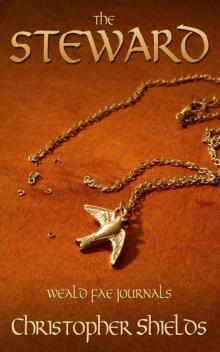 Weald Fae 01 - The Steward
Weald Fae 01 - The Steward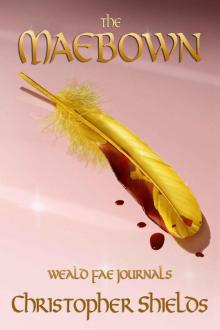 THE MAEBOWN (Weald Fae Journals, Book 4)
THE MAEBOWN (Weald Fae Journals, Book 4)